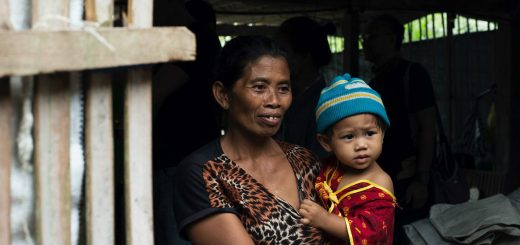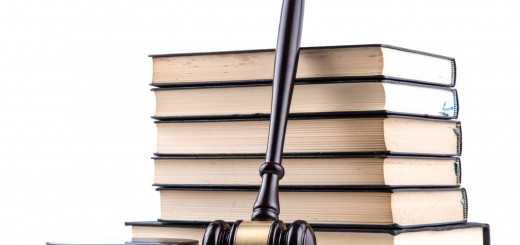The Anniversary of Delgamuukw v The Queen: Two Legacies
On December 11, 1997, the Supreme Court of Canada handed down its landmark decision in Delgamuukw v The Queen, [1997] 3 SCR 1010 [Delgamuukw]. To mark tomorrow’s ten-year anniversary, TheCourt.ca has commissioned a pair of pieces from two of the lawyers involved in the case.
In today’s piece, Peter R. Grant, lead counsel for the Gitxsan and Wet’suwet’en chiefs, describes Delgamuukw’s legacy. Tomorrow, The Hon. Bryan Williams, then-counsel for the Province of British Columbia, will provide an insider’s account of the events leading up to the Supreme Court ruling.
Education by the Experts in Aboriginal Law
As a young lawyer working for the Gitxsan and Wet’suwet’en in their communities in north-central British Columbia for five years, I will never forget the meeting of Gitxsan and Wet’suwet’en Chiefs in the winter of 1982-1983, when they asked me to be their legal Counsel in an aboriginal title action brought by their two Nations. It was a great honour and a large burden. I and Stuart Rush, the other lawyer asked to take on the case, brought together a legal team and for the next fourteen and a half years, I was immersed in the longest running aboriginal title case in Commonwealth history.
I was honoured to be educated by some of the most knowledgeable persons in the field of aboriginal title or, as the Gitxsan and Wet’suwet’en described it, “ownership and jurisdiction” over their lands and resources. I am not here referring to the expert witnesses in ethnography, linguistics, history, archeology or paleobotany, but to the many elders who testified for months about their oral histories of the Gitxsan and Wet’suwet’en and who had been educated by their parents and grandparents, many of whom had been alive prior to the arrival of the first white man into their Territory.
These elders included Martha Brown [Kliiyemlaxhaa] who was born in 1900, Pete Muldoe [Gitluudahl] born in 1906, Stanley Williams [Gwisgyen] born in 1908, Alfred Joseph [Gisday Wah] born in 1926; Mary Johnson [Antgulilbix], born in1904; David Gunanoot [Nii Gyap] born in 1907; Mary Mackenzie [Gyolugyet] born c. 1910; Olive Ryan [Gwaans] born c. 1910; Johnny David [Maxlaxleh] born c.1890, as well as many others.
The knowledge of these elders included the evidence of Gyolugyet regarding the traditional laws concerning feasting; the evidence of Antgulilbix and Gwaans regarding the different feasts for divorce, succession, pole raising and other purposes; and the evidence of Gwisgyen, Gitluudahl and Niigyap, who talked about the boundaries of House Territories, which they studied – along with the laws relating to the preparation for the hunt – as they traveled over the land with their grandfathers.
Among the Wet’suwet’en, Maxlaxleh recalled the taking of the lands from the Wet’suwet’en in the valley south of what is now Houston, the forcing of the Wet’suwet’en onto the reserves and the “footprints” at the edge of Sam Goosley Lake. These footprints (which were still visible in a meadow in 1988 and were about 10 inches deep) were where the Wetsuwet’en chief would stand to observe the location of the sun rising over certain hills in the early spring. When the sun came up just between two hills, the Wet’suwet’en knew it was time to move up to their villages at Tse’Kya [Hagwilget] and Coryatsqua [Moricetown] for the salmon runs. This evidence took the court back to how the Gitxsan and Wet’suwet’en had practiced their laws to protect the lands and resources long before the first European knew they existed.
Recognition of Oral History
I refer in a summary way to the depth of the oral evidence to indicate how significant was the finding of Antonio Lamer C.J. of the importance of oral history of aboriginal persons. In particular, Lamer, C.J. ruled:
Notwithstanding the challenges created by the use of oral histories as proof of historical facts, the laws of evidence must be adapted in order that this type of evidence can be accommodated and placed on an equal footing with the types of historical evidence that courts are familiar with, which largely consists of historical documents.
This ruling has been subject to analysis and modification in a number of subsequent decisions, particularly as a result of a concerted attempt by witnesses for the Crown to challenge, and narrow reliance on oral histories.
In one of the earliest Supreme Court of Canada (“SCC”) applications of this ruling after Delgamuukw, McLachlin, C.J. held:
In determining the usefulness and reliability of oral histories, judges must resist facile assumptions based on Eurocentric traditions of gathering and passing on historical facts and traditions. Oral histories reflect the distinctive perspectives and cultures of the communities from which they originate and should not be discounted simply because they do not conform to the expectations of the non-Aboriginal perspective.
The SCC in Mitchell v MNR, [2001] 1 SCR 911, went on to apparently narrow the application of the use of oral history, stating:
There is a boundary that must not be crossed between a sensitive application and a complete abandonment of the rules of evidence.
Since this decision of the SCC, there have been many other decisions which have attempted to grapple with how to rely upon oral evidence.
However, it is fitting ten years after Lamer C.J.’s recognition of the importance of oral histories, that another trial judge has carefully analyzed and given respect to the oral histories of another aboriginal nation endeavouring to prove aboriginal title. In Tsilhqot’in Nation v British Columbia, 2007 BCSC 1700, Justice Vickers of the B.C. Supreme Court carefully analyzed the expert evidence of oral histories and relied on the leading author, Mr. Jan Vansina, whose authority was accepted by both the Crown and defence witnesses. Justice Vickers analyzed all of the court decisions which have relied on oral histories or been required to take them into account. Justice Vickers acknowledged the difficulty that courts have in looking at such evidence from a Eurocentric perspective. However, he concluded with respect to oral history evidence:
I propose to take this entire body of evidence [oral history and legends] into account and to the extent that I am able, consider it from the Aboriginal perspective. If the oral history or oral tradition evidence is sufficient standing on its own to reach a conclusion of fact, I will not hesitate to make that finding. If it cannot be made in that manner, I will seek corroboration from the anthropological, archeological and historical records. I understand that my task is to be fair and to try to avoid an ethnocentric view of the evidence [emphasis added].
A Second Legacy: The Duty to Consult
In Haida Nation v Minister of Forests, [2004] 3 SCR 511 [Haida Nation], the SCC determined that the Crown had a duty to consult with aboriginal peoples before as well as after the proof of their aboriginal rights and title. On careful analysis, this is a legacy of Delgamuukw.
Many have suggested that the source of the duty to consult is in fact the Supreme Court’s seminal decision in Sparrow v The Queen, [1990] 1 SCR 1075. In that case, the SCC commented on the duty to consult, stating:
Within the analysis of justification, there are further questions to be addressed, depending on the circumstances of the inquiry. These include the questions of whether there has been as little infringement as possible in order to effect the desired result; whether, in a situation of expropriation, fair compensation is available; and, whether the aboriginal group in question has been consulted with respect to the conservation measures being implemented. The aboriginal peoples, with their history of conservation-consciousness and interdependence with natural resources, would surely be expected, at the least, to be informed regarding the determination of an appropriate scheme for the regulation of the fisheries [emphasis added].
However, it was not until Delgamuukw that the duty to consult was described as involving the intention of substantially addressing the aboriginal concerns. Although the SCC in Haida Nation referred to a number of decisions with respect to consultation, it specifically relied on the “seminal decision in Delgamuukw” as confirming and expanding on “the duty to consult.”
This is consistent with the history of judicial consideration of the duty to consult. In Cheslatta Carrier Nation v British Columbia, [1998] BCJ 178 (BCSC), the trial court referred to paragraph 168 of Delgamuukw and held:
The common law duty of consultation as articulated above is always present and always important from the Petitioners’ point of view. In this case, there is in addition a statutory obligation to consult. That obligation in no way lessens the common law duty but it focuses on the issues of project approval as in this case.
Prior to the SCC’s Haida Nation decision, in Taku River Tlinglit v British Columbia, 2001 BCCA 647, the B.C. Court of Appeal re-affirmed the critical significance of Delgamuukw in the application of the duty to consult. Southin J.A. of the Court of Appeal dissented in the result. However, her analysis of the sources of the duty to consult was consistent with the later determination of the SCC in Haida Nation. Southin J.A. held:
Here, there is no treaty, and yet I cannot think it right, when it is plain that the Tlingit have some sort of rights in north western British Columbia, to say there is no duty at all.
….
Another way of addressing the matter is to ask whether the Environmental Assessment Act meets the requirements of Delgamuukw v. British Columbia, [1997] 3 SCR 1010. If it does not, then the statute, if not ultra vires, is at least constitutionally inoperative insofar as it purports to give persons appointed under it power to permit a project to proceed which is not accepted by the Indian band in whose claimed territory it lies.
….
For what it is worth, I have concluded that the Act does meet the demands of Delgamuukw. It provides a process of consultation sufficient to the purpose which, on the facts, was carried out [emphasis added].
Rowles, J.A. of the B.C. Court of Appeal, who rendered the majority decision, also relied on the Delgamuukw duty when she stated that:
Whether consultation has taken place is a relevant factor in the justificatory analysis but, as I read the Supreme Court of Canada decisions on s. 35(1) of the Constitution Act, 1982, consultation alone does not necessarily satisfy the Crown’s constitutional and fiduciary obligations. As Chief Justice Lamer pointed out in Delgamuukw, there is always a duty to consult, but what is required by way of consultation will vary with the circumstances [emphasis added].
Conclusion
Back in the winter of 1982-1983, when the Gitxsan and Wet’suwet’en chiefs met and decided to advance Delgamuukw, it was not foreseeable that a conservative Social Credit government would agree to start treaty negotiations with the aboriginal nations of British Columbia on the eve of the trial judge’s decision. It was hoped that there would be recognition and respect for the Gitxsan and Wet’suwet’en histories and laws relating to their aboriginal title.
In the end, Chief Justice Lamer confirmed that such recognition is a fundamental part of the law of Canada. Although the recognition of oral histories has been under attack since Delgamuukw, it has continually been re-affirmed by judges such as Justice Vickers, who recognized that, in relying on aboriginal oral histories, “courts must undergo their own process of de-colonization.”
Those Gitxsan and Wet’suwet’en chiefs who met in 1983, many of whom have now passed on, would be happy to hear a judge say that blindness to their histories and legal systems is a matter that must be addressed by the Canadian legal system, the judiciary, and by Canadians generally.
In 1983, the Provincial Crown refused to recognize that aboriginal title existed anywhere in British Columbia. The chiefs who met would be happy to know that their long battle has led to the recognition of the consultation obligation prior to the proof of aboriginal rights and title. In short, the Gitxsan and Wet’suwet’en chiefs who fought for recognition of their rights for decades won a victory that allowed the Haida and the Taku River Tlinglit to advance the legal protection of aboriginal rights and title, and to consultation and accommodation prior to proof of title. I know that those with whom I had the honour to work would be proud of their role in the battle for recognition of both aboriginal rights and title, and the need for decolonization in Canada.








Join the conversation